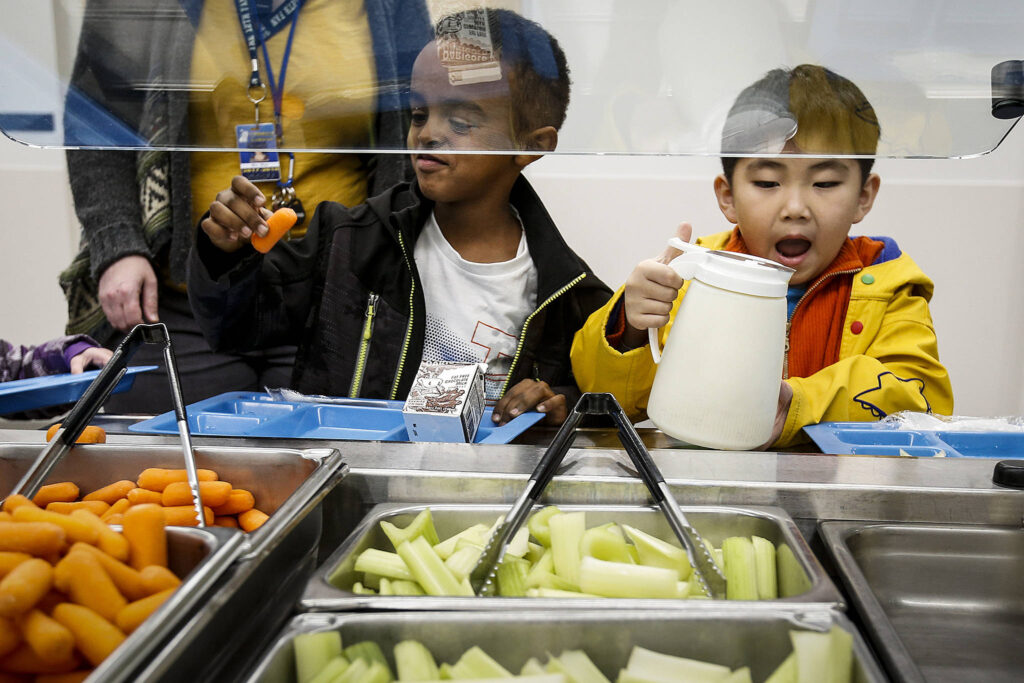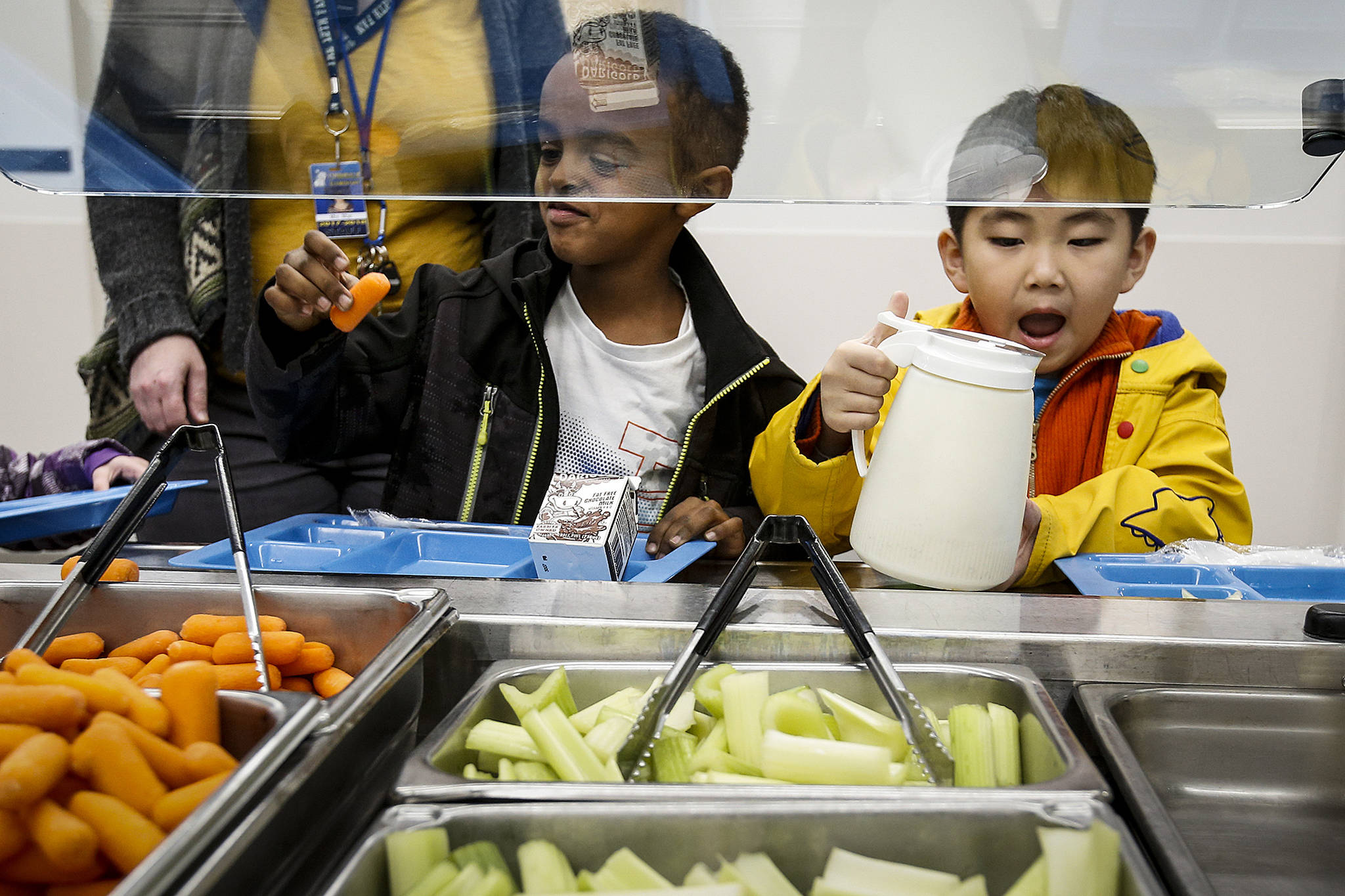
Big changes are heading to your child’s lunch tray. After months of planning, the United States Department of Agriculture (USDA) has finalised a rule to align school breakfasts and lunches with the latest dietary science — and it matters for you, your kids, and your kitchen.
Why this matters
If you’re a parent you’ve probably swapped out snacks, scanned labels, or debated how much sugar is “okay” for your kid. Now those efforts are being reinforced on a larger scale: the school-meal system your child interacts with every day is shifting.
Because while one packet of chips may feel small, the meals kids get at school add up — hundreds of school days, millions of students, and a big public investment. The rules that govern those meals can help set the tone for what kids expect (and ask for) at home.
What’s changing
Here are key points from the new rule from the USDA, officially titled Child Nutrition Programs: Meal Patterns Consistent With the 2020‑2025 Dietary Guidelines for Americans.
- Added sugars will for the first time be capped in school breakfasts and lunches. By the 2027-28 school year, added sugars must make up less than 10% of weekly calories in those programs.
- Sodium is also being reduced — lunches by around 15 % and breakfasts by about 10% by the 2027–28 school year.
- Whole grains stay firmly on the menu — schools will continue to serve at least 80% of grains as “whole grain-rich.”
- More flexibility around plant-based proteins, local foods and cultural preferences. The final rule retains local-food and cultural-flexibility language, even if some components (like whole-grain percentages) weren’t tightened further.
- Phase-in timeline: Although the rule is effective July 1, 2024, schools won’t need to implement key changes until the 2025-26 school year and beyond.
What this really means, in practice
On paper, these sound like “just small tweaks.” But let’s be honest: small tweaks in school-meals affect 30+ million kids every day. (Yep, that’s how many students get breakfast or lunch through school-programs.)
Here are some of the ways this could play out:
- Kids might see fewer high-sugar yogurt cups or cereal choices, or flavored milks with less added sugar.
- Lunch trays might include more whole-grain bread or pasta, perhaps more legumes or plant-proteins, and fewer ultra-processed items.
- Sodium reductions mean familiar items might taste a little less salty — which might spark complaints at first (“This doesn’t taste like the old pizza day”) — but over time taste buds adjust.
- The “local foods/cultural fit” flexibility means that in some districts, you might see more regionally-sourced produce or diverse menu options that reflect student populations.
It’s important: your child’s school meal is not just fuel — it’s a daily context where eating norms get reinforced (or undermined). Schools are part of the ecosystem. If you’re trying to make changes at home (less sugar, more whole foods, better snacks), it helps a lot when the same message shows up at school.
The Challenges on the Ground
Of course, big changes like these don’t happen in a vacuum. They land in busy cafeterias run by people doing their best with tight budgets, limited staff, and unpredictable food costs.
Most schools already walk a fine line between nutrition standards, student preferences, and the bottom line. These new rules could make that balance even trickier.
For example:
- Budget pressures. Healthier ingredients—especially fresh produce and lower-sodium prepared foods—often cost more. And many school meal programs barely break even. The National School Lunch Program reimburses meals, but rising food and labor costs mean schools are constantly doing the math to stay afloat.
- Supply chain challenges. Smaller or rural districts may struggle to find vendors who meet new sodium or sugar limits, or to source enough whole grains and fresh foods consistently.
- Food waste. When recipes change—less salt, less sugar, new textures—kids sometimes reject them. That can lead to more uneaten food, especially in the first months of rollout.
- Staff training. Adjusting recipes, retraining kitchen teams, and reworking menus takes time and energy—something cafeteria managers are already short on.
It’s a reminder that these nutrition updates, while important, can’t be implemented by policy alone. Schools need support—funding, equipment, training, and time—to make these changes work long-term.
That’s also where parent involvement comes in: a little understanding and a lot of collaboration can go a long way. Instead of complaining about the new food, we can help create a culture that celebrates the effort behind it.
What parents can actually do
Let’s keep it practical. Your home-actions don’t need to be perfect. They just need to be consistent and intentional. Here are three action steps you can start now:
- Use the school menu as a conversation starter.
Ask your child: “What did you eat today?” and “What would you have liked more of?”
These are not quiz-questions; they’re checks on the landscape. They give you a sense of whether the school’s menu is moving (or not) in the direction you’d want. - Get engaged with your school’s wellness efforts.
If your district has a wellness committee, a parent-nutrition subgroup, or a PTA committee around school meals: join it or ask for updates. Your voice matters. School meal standards change at the macro-level, but the actual menu changes happen locally. - Model the same balance at home that schools are working toward.
Less sugar, less salt, more whole foods. It’s not about perfection or starving the fun stuff — it’s about making sure the small stuff adds up to better habits.- Swap high-sugar snack yogurts for plain + fruit.
- Season at the table, not in the pot.
- Offer whole-grain bread or wraps.
- Make water the default drink (and make sugary drinks an occasional treat).
These at-home moves reinforce what the school is trying to do. They send consistent signals.
Why this matters for the long game
Because yes — we’re talking school meals. But at its core this isn’t just about “one lunch per day.” It’s about habit-formation, taste-buds, expectations, and the culture of food in the home and beyond. When kids see “less sugar, less salt, more whole foods” not just at home but in the cafeteria, it normalizes that pattern.
Also: parents still set the tone in the home. Even the best school meal program can’t cover every snack, every after-school food moment, every kitchen table. You’re still the primary influence. The school changes open a door; you walk through it.
And because we’re zooming out: these changes contribute to bigger goals — reducing diet-related illness, improving energy/attention in school, supporting kids’ growth, and yes, setting them up with better habits for the future.
A few caveats
- Implementation will vary by district. Some schools may struggle with budgets, procurement, staff training, food availability. So don’t expect uniform perfection overnight.
- Kids will still see treats, fun foods, cafeteria specials. This isn’t about “food policing” or eliminating anything fun. It’s about shifting the baseline.
- If your child is a picky eater or has strong preferences, the transition may trigger push-back. Some familiarity will help them feel safe. Be ready to talk about “we’re trying something new” rather than “you have to eat this.”
- Taste-buds adapt, but they take time. The first few months might feel “different.” That’s OK.
Final word
Policy shifts like this — the school-meal update by the USDA — matter a lot. But they won’t succeed without you. Because behind the cafeterias, behind the meal-pattern rules, are real families, real kids, real tables. One packed lunch and one conversation at a time — that’s where change happens. Schools might change the menu. You change the attitude. And together you change the expectations.
References
https://www.fns.usda.gov/cn/fr-042524
https://www.k12dive.com/news/usda-school-nutrition-standards-update/714125
https://www.fns.usda.gov/nslp/program-operator/guidance-resources

Leave a Reply